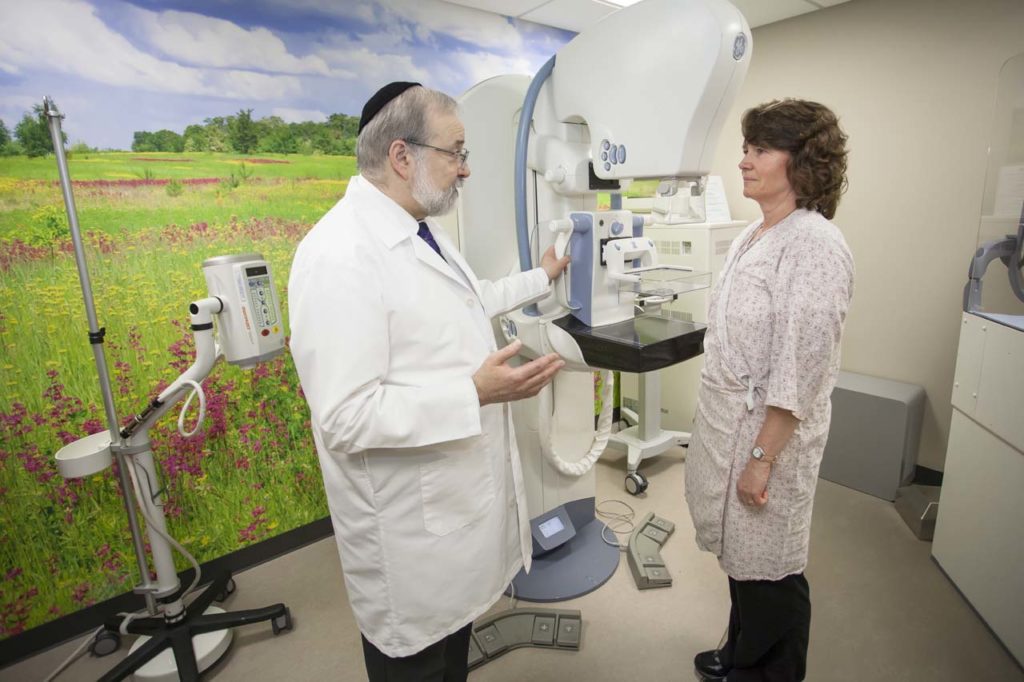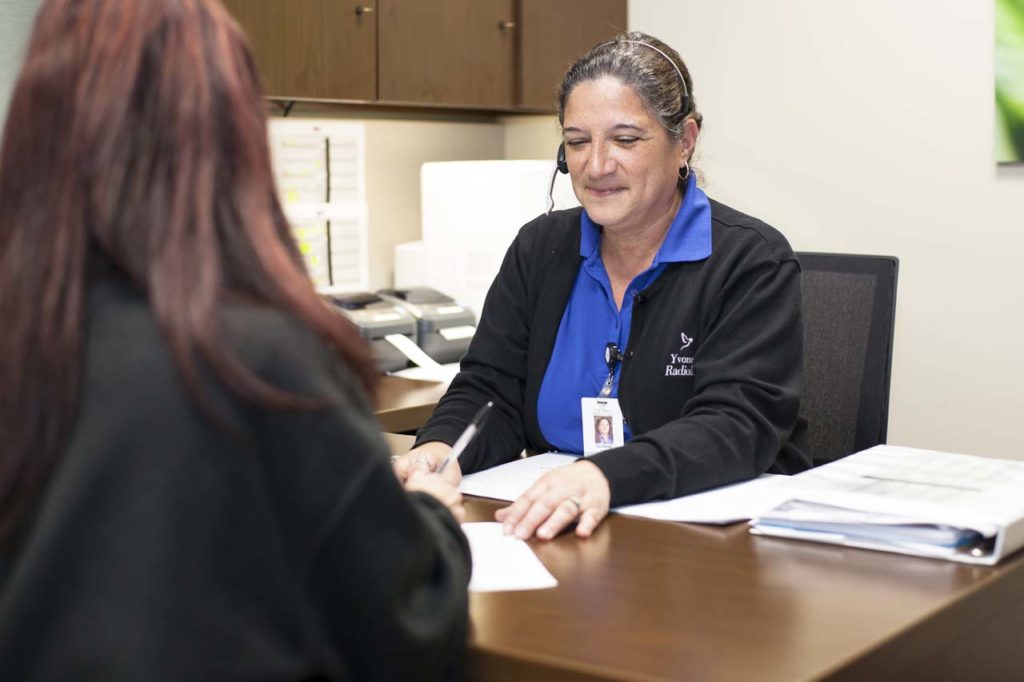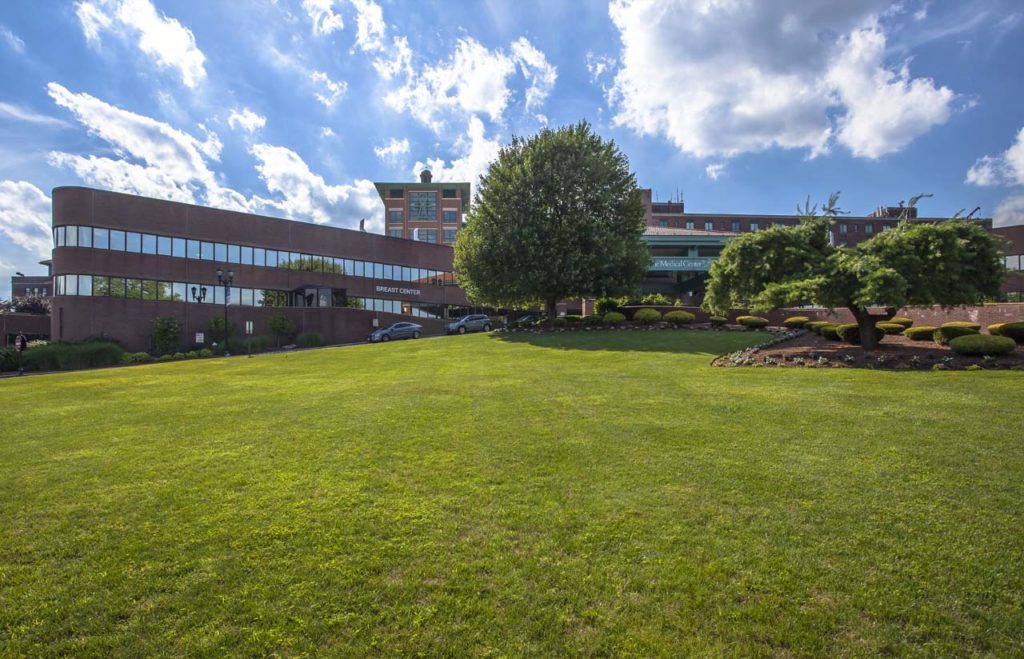The newly renovated Breast Center at Holy Name Medical Center is designed with the patient in mind
by Jessica Jones-Gorman • Photos By Robert Nuzzie
When Holy Name Medical Center’s newly renovated Breast Center opened in the summer of 2016, one of its most striking features was the careful attention that had clearly been paid to the radiology hub’s layout and design.

“We spent a lot of time considering the building’s flow, and put emphasis on the placement of screening rooms,” noted Dr. Joshua Gross, medical director of the Breast Center and Holy Name’s lead interpretation physician. “I’ve worked in several other breast centers throughout my career, and the one thing that always stood out to me was how disjointed they were. That’s why our main goal here was to come up with a blueprint that really made sense for everyone—patients and physicians.”
Holy Name’s Breast Center, which has been certified by the American College of Radiology and earned the designation “Breast Center of Excellence,” offers the latest generation in screening and diagnostic technology in a space that focuses on patient care, safety, and privacy.
“One of the most important details of our center is separate screening rooms,” Gross said. “Our diagnostic patients who are coming back for biopsies and further testing are separated from those who are reporting for annual routine mammograms.
Waiting for test results can be such an anxious process, and we wanted to make sure that each of our patients is able to do so privately.”
Gross, who has extensive experience in mammography, stereotactic breast biopsy, sonography, CT scanning, and nuclear medicine, earned his medical degree from Albert Einstein College of Medicine in New York City. He completed his internship at Long Island College Hospital before tackling a residency at Jacobi Hospital in the Bronx. He worked in private practice for 10 years before moving to Israel and taking a position there as a director of radiology, where he introduced mammography and breast and body sonography. He returned to the U.S. in 1996 and became the chief of breast imaging at New York’s Beth Israel Medical Center. He was named medical director of breast imaging at Holy Name, in Teaneck, in 2006.
“When I came to Holy Name I wanted to perform breast imaging the same way it is performed in private practice,” Gross said. “Some women want to have screening done at their convenience—come in and immediately go back home or to work and receive their results in the mail. That is how most screening is done in this country, because the readings are done by the batch and it’s cheaper. But there are many who want to know right away, get everything done during their visit. So we give them that option. If you choose to wait for results, a radiologist will look at your images and be available to discuss them. If additional pics or even a sonogram is needed, we can do them right away. We do what it takes to suit every preference and make everyone happy. Mammography tends to make women anxious and nervous, and we do everything possible to ease those feelings.”

And according to Gross, a radiologist is often a patient’s best resource for test interpretation.
“A radiologist is most qualified to discuss how a test is done and the risks involved,” he noted. “And in most instances, he or she is the person best suited to explain a diagnosis because their main interest is in breast disease.”
That’s why Gross designed the reading rooms at Holy Name as the settings for such discussions.
“We made the workstation large enough to accommodate an assistant who can help the radiologist obtain scans and faxes, making sure they have every bit of information needed to make the right diagnosis,” he said. “There are a number of computers and screens and plenty of room for them to interpret mammogram, ultrasound, and MRI results.”
One of the most innovative features of the Breast Center is its use of contrast-enhanced spectral mammography (CESM). Holy Name Medical Center is one of the first hospitals in New Jersey to offer this procedure, a new and powerful diagnostic tool in the field of breast imaging.
“This type of mammography is useful for women at high risk for developing breast cancer, as well as for problem solving,” Gross said of the new diagnostic tool. “It has better specificity to help us find what we are looking for, and it is not as sensitive as a regular breast MRI. We are very pleased to be working with this screening tool.”
Spearheaded by Dr. David Chun, CESM is similar to a breast MRI in accuracy, but is faster, more comfortable, and less costly. The patient receives an injection of iodine-based contrast, the same used for CT scans. Then routine mammogram imaging is done, at which time a special unit takes two sequential exposures for each view. One exposure’s image is similar to a standard mammogram, the other reveals areas that absorb the contrast, which signals increased blood flow and can be associated with tumor development.
The center’s staff, providing a range of specialized services, consists of six board-certified radiologists, a team of registered nurses, and several female breast-imaging technicians. “We have an excellent team here who are very devoted to patient care,” Gross said.
Although breast cancer is a deadly disease that affects tens of thousands of American women each year, Gross sees many reasons to be hopeful.
“The facts are that the death rate from breast cancer has gone down at least a third since guidelines for yearly mammography were implemented in the 1990s,” he said.
“Regular screenings save lives; the first question you are asked after a breast cancer diagnosis is, ‘When was your last mammogram?’ But tests like these are sadly driven by economics, and in an effort to save dollars, many organizations are attempting to stop annual testing and push screening back to every two to five years.”
But new innovations are cropping up every day.
“Thankfully companies are building better mousetraps all the time,” Gross said. “New 3-D technology now plays a critical role in the early detection of breast cancer and can be done in conjunction with a standard 2-D digital mammogram.
That, coupled with a deep-rooted culture of respect and care for each and every patient, is what makes the Breast Center at Holy Name Medical Center shine.”

Breast Center at Holy Name Medical Center
718 Teaneck Road, Teaneck, NJ
201.833.7100 / holyname.org
